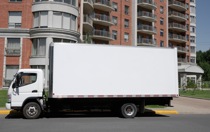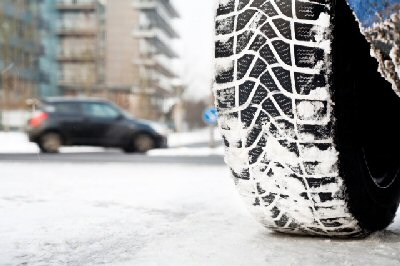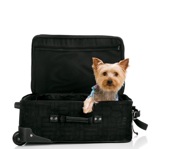35 years ago Jim’s Express (now Highland Moving) lent a 17 year old home sick employee $100 to help him get back to see his family in Newfoundland. He never returned, or paid the money back. Today we received a letter of apology and a money order in the mail for the loan and interest, 35 years later! Some stories just renew your faith in human kind. Thanks Jack.
Thanks Jack!
Moving fine art
Moving fine art is a fine art itself and finding the right company to help you is key. Rest assured, your professionals at Starline Moving are just the right folks to get the job done. However, there are several things you need to do to prepare yourself. In order to make sure that you are ready, check to see if you have current appraisals for all of your precious items. This way you will know the appropriate insurance levels to obtain so you are adequately covered. Depending on the item, you may have to get specific coverage just for it. Therefore, it is very important to identify your high-valued items in your inventory and discuss it with your moving representative.
After having your items appraised, if there are any changes in their values, you should also follow up with your insurance agent to make sure that you update any appropriate riders on your policy. You also want to discuss with your insurance agent any potential gaps in your coverage that you should address. Taking these extra steps will ensure that your fine art is protected and give you the peace of mind knowing that your are covered.

Affects of corporate relocation on a family
Corporate relocations do have an affect on family life. The key to a successful move is mitigating any negative affects and optimizing positive experiences. Once you get notice that you are relocating for your job, you need to discuss it with your family. Often times with corporate relocations, the breadwinner is moving to ensure continued employment and a future with the company. Therefore, it is so important to keep the lines of communication with family members open. Have a family meeting to discuss what will happen, expectations and get feedback from your children and/or partner. The ages of your children will determine the input and tone of the discussion. They may be concerned about leaving family and friends. Address these concerns with various options like video chats, home visits and correspondence. Having your children start a journal is a great way for them to express their feelings throughout the process. The important take-away is to keep the family involved and informed. This will make it easier on everyone concerned. It will also gain buy-in from the family on your new adventure.
Outline any special needs your family may have and make sure you are able to meet them in your new location. This will require research, education and time. Companies, like Starline, have additional resources available to corporate relocation clients. Take full advantage of these resources. It will help make an easier transition on you and your family as you embark on your new life. Best wishes on your new opportunity!
Insuring Your Goods
As you prepare to move, you need to ensure you have adequately insured your goods. Although your professional movers at Starline will make every effort to take care of your goods, unforeseen accidents can happen. Even if you hire a professional mover, like Starline, you should still evaluate your own insurance coverage before you move. Contact your insurance agent and review your policy and explain the details of your move with them. Take inventory of your items and evaluate your current insurance coverage. If you have riders on your homeowner’s policy for example, chances are you may need additional coverage for your move. If you have specialty items like artwork and antiques, you will have to identify them to your mover ahead of time and discuss coverage options.
Professional movers, like Starline carry insurance and are required to take liability of the items they transport. However, there are different levels of liability they will assume. Therefore, you will need to discuss in detail what is covered ahead of time with them and be clear about your high-valued items. It is worth identifying these ahead of time so that you are adequately covered. I suggest you take photos of your high-valued items prior to packing to document the items. Use these photos to develop your high-valued inventory. Starline has put together some great resources to help you. Check out how to complete a high-valued inventory and a sample high-inventory form.
These extra steps are definitely worth doing in order to ensure any gaps in insurance are identified and addressed.

Preparing to Take Delivery of Your Goods
Preparing to take delivery of your goods is important to ensure a smooth move into your new home. If at all possible, time your closing date or date of possession to allow for at least one day prior to moving. This gives you a contingency in the event there are some last minute complications with your home purchase. Also, it gives you another day to get familiar with your new home before the chaos of moving day. If you have the time and supplies, label each room with a sheet of paper. For example label your family room, kids’ rooms, master bedroom, etc. This will help cut down on the amount of questions you will get from the movers.
Look at your new location with a critical eye. Do you have ample space for the moving truck? Do you have parking? Do you live in a gated community? Did you reserve the freight elevator? Noting any potential challenges and letting your professional mover know ahead of the move will help save you time and minimize any problems.
Familiarize yourself with any HOA (Homeowner’s Association) policies and regulations. You may be surprised what you may find in those documents that may have an impact on your move. This extra step will allow you to mitigate any potential problems ahead of your moving day, so you will have time to focus on taking possession of your goods.
When possible, having two adults available on your moving day is very helpful. This way, one can direct the movers and answer questions, while the other checks-off the bill of lading.
If you have pets or children, keep in mind that the flurry of activity on the day of the move can cause complications. Doors will be left open and movers may not be looking for pets or little ones, when they are hauling boxes and furniture. Therefore, for their own safety keep pets contained and children busy and away from high traffic areas. Extra preparation will pay dividends and alleviate some stress on the day of the move.

Moving in the cold can have an impact on your appliances and electronics
If you are planning on moving during this cold weather season, it is important to know that it can have an impact on your appliances and electronics. Your professionals at Starline will take care to mitigate these affects. However, these helpful tips adapted from ReloRoundtable (http://reloroundtable.com/blog) should help you understand what to expect and how to handle your goods once you take delivery to prevent damage.
Washing Machines
Transporting washing machines require special care and attention, especially during colder weather. Remaining water and moisture within the machine needs to be removed in order to prevent damage from freezing temperatures during transport. Further, take time to let the appliance return to operating temperature, which is approximately 60 degrees before use. Also, if you own a front-end loader always have the drum bolted down during transport to prevent damage.
Gas and Electric Dryers
When these appliances are exposed to freezing temperatures, it can affect the igniters and heating elements. Therefore, once the appliance is delivered, take the time to have it return to operating temperature, which is approximately 60 degrees before use to prevent damage.
Refrigerator/Freezer/Ice-maker
Once you have emptied out your refrigerator and freezer and prepared it for the move, it is important to note that if you have an ice-maker extra attention is required for transport. It is advised to disconnect the ice-maker from the water supply and have the extra moisture blown-out of the tubing in order to prevent it from freezing during transport. It is suggested to reconnect your ice-maker to the water supply 12 to 24 hours after you have taken delivery. This will help the appliance return to normal operating temperature. Even with this special care and attention, hair-line cracks may form in the tubing during transport, which could lead to leaks. Therefore, once you hook-up the water supply, a thorough system check should be completed to assess the appliance’s working performance.
Electronics
Cold temperatures can wreak havoc on your electronics. Condensation can form on sensitive components and cause damage. Therefore, once you take delivery of these items, be patient and let them return to room temperature before use.
Grandfather Clocks
Freezing temperatures can cause the oil in the components to gel and affect the its operation and cause damage. Again, once you take delivery, let your clock acclimate to room temperature before resetting the mechanism.
Waterbed Mattress
No matter how thoroughly your mattress is drained, moisture will remain within the housing of the mattress. This residual moisture will freeze and extra care must be taken in its transport to prevent these frozen particles from damaging the mattress housing. It is suggested that the mattress remain in its box for about 12 to 24 hours to return to room temperature before it is handled and re-filled.
Knowing these extra details will help you work with your professional mover as a team to ensure that your goods remain in working order long after you take delivery.

After the move, take part in community activities
After you make your move and begin to settle, the quickest way to start to assimilate to your new environment is to take part in community activities. This is a great way to meet people, enjoy new food and immerse yourself in the culture. Some of these activities may be very different from what you are used to but try to broaden your perspective and experience what makes you feel comfortable.
Holidays and festivals are a great preview to the new cultural environment you have found yourself. Taking part in these activities are great fun and allow you to experience what the locals enjoy.
Go to a farmer’s market and walk around. See what vendors are selling. Smell the spices, touch the produce and talk to the vendors. It may be full of surprises but it may not. You may see some very familiar and exotic items on offer. Either way, it is an excellent opportunity to take part and see what intrigues you.
You will be surprised how just getting out and experiencing what is on offer in your new environment gives you a fantastic perspective on the culture and way of life.

Acclimating to Your New Environment
As you move to an entirely new location, you will have to begin to acclimate to yourself. As a part of this process, you should educate and familiarize yourself about the climate. If you are used to living in warmer climates, getting prepared to live in the cold will be an adjustment. In order to do that, do your research. Learn what the average highs and lows are for the winter season and make sure you get the right gear to keep you warm. If you have never shopped for winter gear, look for indicators on the clothing. Many coats, hats and gloves will indicate a temperature rating. This will help you equip yourself with the right clothing. Also, don’t forget boots. Most boots will give you a a temperature rating as well. Keep in mind, if you will be facing a cold climate, you definitely want to make a good investment in a good coat and boots. It will make all the difference.
Further, if you have never driven in snow or ice, take the time to learn. Familiarizing yourself with what to do and what not to do can make a difference in getting in an accident or not.
On the other hand, if you are moving from the cold to the warmth, take the time to familiarize yourself with the average high and low temperatures. If you have never experienced humidity, learn about the heat index. The high temperature can be deceiving if you are unfamiliar with humidity. Humidity will make it feel much hotter depending on its percentage. Also, humidity does make a huge difference on how you handle your food. Food like bread will mold faster and dry cereals will get chewy in humidity if left out.
Further, if you are moving to an extreme climate, whether it gets very cold or hot, do not leave things in your car. It will ruin them. For example, your soda will explode in very cold temperatures and your DVDs will melt in very hot temperatures. Therefore, it is important to learn what your local colleagues do. It will save you in the end.

Finding Temporary Accommodation
When you are undertaking a move, often times you will have to look into temporary accommodation. As with everything else with a move, the more research you do ahead of time, the better prepared you will be. First, assess your housing needs. Do you have a family? How big is your family? Do you have pets? Will you be boarding your pet or do you want to have them living with you? How long will you need to be in temporary quarters? Where is your work or school in proximity to where you want to live? Do you want to have access to kitchen and laundry facilities?
Once you have made a list of all of your needs, you will be able to begin your search. Identifying what you need is critical in finding just the right temporary accommodation for you and your family. It will allow you to focus on those places that will meet your needs. Also, if you are going to be in temporary living quarters for an extended period of time, you definitely want to consider a corporate apartment. These apartments are designed to meet your day-to-day living needs. Many are nicely furnished and come with basic appliances and dishes. Some even offer maid and concierge services. Just keep in mind. The more amenities and services you want, the more the cost will be.

Moving Your Pet to Another Country
After you have made the big decision to move to another country and start the process, you need to keep in mind the other member of your family, your pet. Research is a key component to preparing yourself and your pet for the trek. Each country has its own rules and regulations on what can or can not be brought into the country and this includes pets. The better prepared you are, the better the transition will be. Some countries require pet passports and quarantine, while most require at the least some form of health documentation. In addition to country regulations, airlines have their own pet policies and travel regulations. The size and type of your pet will determine what type of carrier you can keep them in. Further, if your pet is small enough, he or she can travel with you in the cabin. If not, your pet will have to travel in the bulkhead. Weather plays an important role on whether or not you can transport your pet when they have to travel in the bulkhead. If it is too hot or too cold, you may have to reschedule the flight.
If handling all of this on your own seems like a daunting task, there are several companies that are out there that can help you transport your pet to the country of your choice. Also, there are online resources, like www.pettravel.com that can be of help. Your friends at Starline have also put together a helpful reference sheet to help you move your pet. If you are on a corporate relocation, your company may have a preferred vendor or recommendation list. Make sure you let your relocation coordinator know that you will be moving a pet. Depending on your company’s relocation policies, they may cover the cost or a portion of it to transport your pet. It is definitely worth the research ahead of time to familiarize yourself with what is covered and what is not. This way you can budget accordingly.









